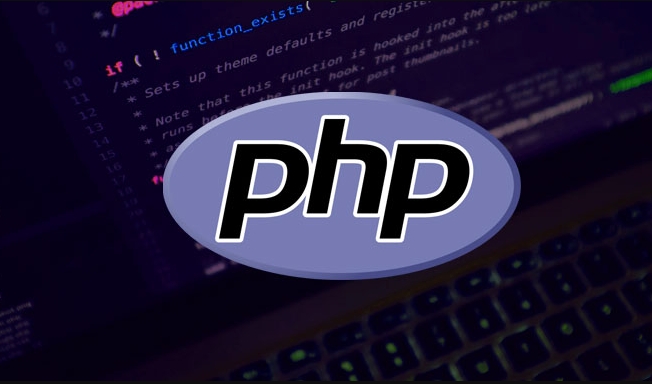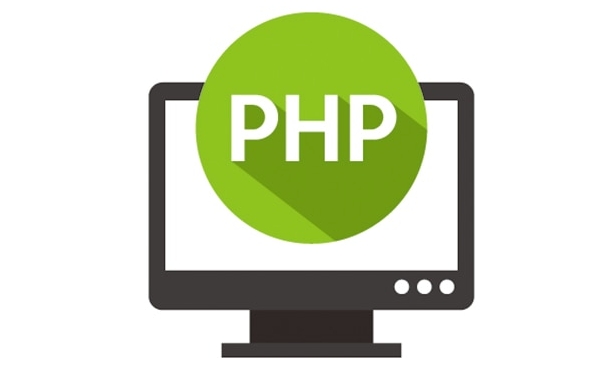PHP functions can improve code reusability and organization through function keyword definition. 1. Use function function name (parameter list) when defining a function { function body return return value; }, such as function add($a, $b) { return $a $b; }, the function name is case-sensitive, the parameters can have multiple or none, return is optional. 2. When calling a function, you must use the function name to add brackets and pass in the corresponding parameters, such as $result = add(3, 5); and the parameter order should be consistent with the definition, and brackets cannot be omitted. 3. You can set default parameters to enhance flexibility, such as function greet($name = "Guest") { echo "Hello, $name!"; }, which can be omitted when calling. 4. It is recommended to store functions in separate files and introduce them through include or require to avoid repeated definitions. You can use function_exists() to check whether they have been defined and the naming should be clear and clear.

It is actually not difficult to define and call a PHP function. As long as you understand the basic structure and syntax, you can get started quickly. Functions are the basic tools for organizing code and improving reusability. Whether writing small projects or large applications, they are inseparable from them.

1. How to define a function?
PHP uses the function keyword to define functions. The basic format is as follows:

function function name (parameter list) {
// Function body, that is, the executed code return return value; // optional}For example, define a simple addition function:
function add($a, $b) {
return $a $b;
}Some points to note:

- Function names are case-insensitive (but they are recommended to remain consistent)
- There can be multiple parameters or no
-
returnis an optional option to return the result
2. How to call a function?
After defining the function, you only need to use the function name to add brackets and pass in the corresponding parameters to call:
$result = add(3, 5); echo $result; // Output 8
Pay attention to when calling:
- The parameter order must be consistent with the definition
- If the parameter type is expected in the function, try to pass the correct type of data as much as possible
- Parentheses cannot be saved when calling a function without parameters
3. Use default parameters to make functions more flexible
Sometimes we want certain parameters to have default values ??so that they can be optionally omitted when called. For example:
function greet($name = "Guest") {
echo "Hello, $name!";
}The call method can be:
greet(); // Output Hello, Guest!
greet("Alice"); // Output Hello, Alice!This design allows functions to adapt to more scenarios and reduces the chance of errors.
4. Where to put the function? Some practical suggestions
- Concentrate common functions into a file , such as
functions.php, and then introduce them throughincludeorrequire. - Avoid repeatedly defining functions , otherwise an error will be reported. You can use
function_exists()to check whether it is defined. - Naming should be meaningful , for example,
calculateTotalPrice()is clearer thancalc().
Basically that's it. Functions are one of the most basic and practical structures in programming. If you write too much, you will find that it makes the code cleaner and the logic clearer.
The above is the detailed content of How to define and call a function in PHP?. For more information, please follow other related articles on the PHP Chinese website!

Hot AI Tools

Undress AI Tool
Undress images for free

Undresser.AI Undress
AI-powered app for creating realistic nude photos

AI Clothes Remover
Online AI tool for removing clothes from photos.

Clothoff.io
AI clothes remover

Video Face Swap
Swap faces in any video effortlessly with our completely free AI face swap tool!

Hot Article

Hot Tools

Notepad++7.3.1
Easy-to-use and free code editor

SublimeText3 Chinese version
Chinese version, very easy to use

Zend Studio 13.0.1
Powerful PHP integrated development environment

Dreamweaver CS6
Visual web development tools

SublimeText3 Mac version
God-level code editing software (SublimeText3)
 PHP Variable Scope Explained
Jul 17, 2025 am 04:16 AM
PHP Variable Scope Explained
Jul 17, 2025 am 04:16 AM
Common problems and solutions for PHP variable scope include: 1. The global variable cannot be accessed within the function, and it needs to be passed in using the global keyword or parameter; 2. The static variable is declared with static, and it is only initialized once and the value is maintained between multiple calls; 3. Hyperglobal variables such as $_GET and $_POST can be used directly in any scope, but you need to pay attention to safe filtering; 4. Anonymous functions need to introduce parent scope variables through the use keyword, and when modifying external variables, you need to pass a reference. Mastering these rules can help avoid errors and improve code stability.
 How to handle File Uploads securely in PHP?
Jul 08, 2025 am 02:37 AM
How to handle File Uploads securely in PHP?
Jul 08, 2025 am 02:37 AM
To safely handle PHP file uploads, you need to verify the source and type, control the file name and path, set server restrictions, and process media files twice. 1. Verify the upload source to prevent CSRF through token and detect the real MIME type through finfo_file using whitelist control; 2. Rename the file to a random string and determine the extension to store it in a non-Web directory according to the detection type; 3. PHP configuration limits the upload size and temporary directory Nginx/Apache prohibits access to the upload directory; 4. The GD library resaves the pictures to clear potential malicious data.
 Commenting Out Code in PHP
Jul 18, 2025 am 04:57 AM
Commenting Out Code in PHP
Jul 18, 2025 am 04:57 AM
There are three common methods for PHP comment code: 1. Use // or # to block one line of code, and it is recommended to use //; 2. Use /.../ to wrap code blocks with multiple lines, which cannot be nested but can be crossed; 3. Combination skills comments such as using /if(){}/ to control logic blocks, or to improve efficiency with editor shortcut keys, you should pay attention to closing symbols and avoid nesting when using them.
 How Do Generators Work in PHP?
Jul 11, 2025 am 03:12 AM
How Do Generators Work in PHP?
Jul 11, 2025 am 03:12 AM
AgeneratorinPHPisamemory-efficientwaytoiterateoverlargedatasetsbyyieldingvaluesoneatatimeinsteadofreturningthemallatonce.1.Generatorsusetheyieldkeywordtoproducevaluesondemand,reducingmemoryusage.2.Theyareusefulforhandlingbigloops,readinglargefiles,or
 Tips for Writing PHP Comments
Jul 18, 2025 am 04:51 AM
Tips for Writing PHP Comments
Jul 18, 2025 am 04:51 AM
The key to writing PHP comments is to clarify the purpose and specifications. Comments should explain "why" rather than "what was done", avoiding redundancy or too simplicity. 1. Use a unified format, such as docblock (/*/) for class and method descriptions to improve readability and tool compatibility; 2. Emphasize the reasons behind the logic, such as why JS jumps need to be output manually; 3. Add an overview description before complex code, describe the process in steps, and help understand the overall idea; 4. Use TODO and FIXME rationally to mark to-do items and problems to facilitate subsequent tracking and collaboration. Good annotations can reduce communication costs and improve code maintenance efficiency.
 Learning PHP: A Beginner's Guide
Jul 18, 2025 am 04:54 AM
Learning PHP: A Beginner's Guide
Jul 18, 2025 am 04:54 AM
TolearnPHPeffectively,startbysettingupalocalserverenvironmentusingtoolslikeXAMPPandacodeeditorlikeVSCode.1)InstallXAMPPforApache,MySQL,andPHP.2)Useacodeeditorforsyntaxsupport.3)TestyoursetupwithasimplePHPfile.Next,learnPHPbasicsincludingvariables,ech
 How to access a character in a string by index in PHP
Jul 12, 2025 am 03:15 AM
How to access a character in a string by index in PHP
Jul 12, 2025 am 03:15 AM
In PHP, you can use square brackets or curly braces to obtain string specific index characters, but square brackets are recommended; the index starts from 0, and the access outside the range returns a null value and cannot be assigned a value; mb_substr is required to handle multi-byte characters. For example: $str="hello";echo$str[0]; output h; and Chinese characters such as mb_substr($str,1,1) need to obtain the correct result; in actual applications, the length of the string should be checked before looping, dynamic strings need to be verified for validity, and multilingual projects recommend using multi-byte security functions uniformly.
 Quick PHP Installation Tutorial
Jul 18, 2025 am 04:52 AM
Quick PHP Installation Tutorial
Jul 18, 2025 am 04:52 AM
ToinstallPHPquickly,useXAMPPonWindowsorHomebrewonmacOS.1.OnWindows,downloadandinstallXAMPP,selectcomponents,startApache,andplacefilesinhtdocs.2.Alternatively,manuallyinstallPHPfromphp.netandsetupaserverlikeApache.3.OnmacOS,installHomebrew,thenrun'bre






